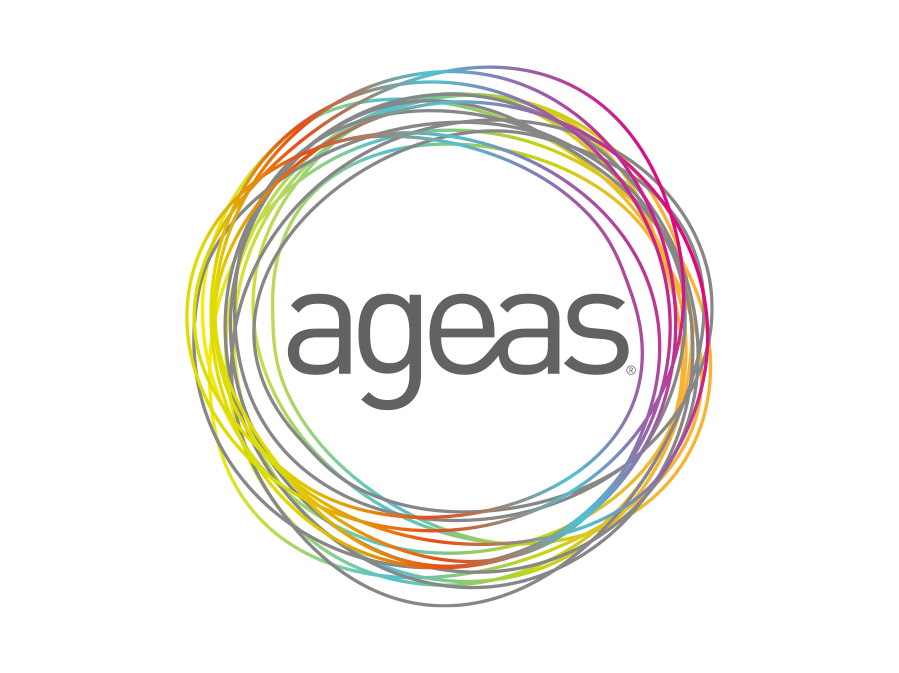Best Life Insurance with Critical Illness Cover UK

Life is wonderfully unpredictable, but this unpredictability also brings financial risks. While we all hope for a long and healthy life, the reality is that illness or premature death can strike at any time, leaving families and businesses financially vulnerable. This is where a robust financial safety net becomes not just a sensible precaution, but an essential pillar of your financial plan.
One of the most powerful and popular forms of protection in the UK is a combined Life Insurance and Critical Illness Cover policy. It’s designed to provide a financial cushion when it’s needed most, covering two of life's most significant challenges: being diagnosed with a serious illness or passing away unexpectedly.
But with so many providers and policies on the market, how do you find the best plan for your unique circumstances? This guide is here to demystify the world of combined life and critical illness cover. We’ll break down what to look for, explain the jargon, and provide the insights you need to make an informed decision, ensuring your loved ones and your lifestyle are protected, no matter what the future holds.
Top plans that combine protection for death and illness
When searching for the "best" life and critical illness plan, it’s crucial to understand that "best" is subjective. The optimal policy for a 25-year-old freelancer will differ from that of a 45-year-old company director with a family and a large mortgage. The true measure of a top plan lies not in the brand name, but in the quality and comprehensiveness of its features.
The UK's leading insurers offer a range of plans, typically tiered as 'standard' and 'enhanced' (or 'plus') options. The difference isn't just the price; it's the depth of protection. A superior policy provides a more robust safety net.
Here are the key battlegrounds where top-tier plans distinguish themselves:
- Comprehensiveness of Conditions: The sheer number of illnesses covered is a primary differentiator. While all policies cover the "big three" – cancer, heart attack, and stroke – top plans cover a much wider array of conditions, often exceeding 50 or even 100 specified illnesses.
- Quality of Definitions: It’s not just what is covered, but how it's covered. Leading insurers use 'ABI+' definitions, which are more generous than the minimum standards set by the Association of British Insurers. This can mean the difference between a claim being paid or declined.
- Additional/Partial Payments: Enhanced plans excel here. They provide smaller, partial payouts for less severe conditions, such as early-stage cancers or the need for certain surgeries. This provides financial support without terminating the entire policy, leaving the full sum assured in place for a more severe event or death.
- Children's Critical Illness Cover: This is often included as standard, but the quality varies. Top plans offer higher payout amounts (e.g., up to £50,000), cover more conditions (including specific childhood illnesses and congenital conditions), and may include benefits like a funeral contribution or overseas treatment allowance.
- Value-Added Benefits: This is a rapidly growing area of competition. Insurers are bundling their policies with a suite of wellness services, accessible from day one. These can include:
- 24/7 Virtual GP appointments
- Mental health support and counselling sessions
- Second medical opinion services from global experts
- Nutrition and fitness programmes
- Physiotherapy and rehabilitation support
These benefits provide tangible value even if you never make a claim, helping you and your family stay healthier.
Comparing Plan Features: Standard vs. Enhanced
To illustrate the difference, let's compare the typical features of a standard plan versus a top-tier, enhanced plan.
| Feature | Standard Plan | Enhanced/Premium Plan | Why It Matters |
|---|---|---|---|
| Full Payment Conditions | 30-40 conditions | 50-100+ conditions | A wider net catches more eventualities. |
| Additional Payments | 5-10 conditions | 40-80+ conditions | Get a payout for less severe illnesses without ending your main cover. |
| Cancer Definition | Covers invasive cancers. | Covers more early-stage and non-invasive cancers. | Cancer is the #1 cause of CI claims; better definitions are vital. |
| Children's Cover | £25,000 limit, standard conditions. | Up to £50,000 limit, enhanced conditions, pregnancy complications. | Provides a more significant financial buffer if a child becomes seriously ill. |
| Survival Period | 14 days | 10 days | You receive your payout sooner after diagnosis. |
| Value-Added Services | Limited or none. | Comprehensive suite (Virtual GP, Mental Health, etc.). | Provides immediate, ongoing value and support for your wellbeing. |
| TPD Definition | Any Occupation | Own Occupation (for many roles) | 'Own Occupation' is far superior, paying out if you can't do your specific job. |
Choosing the right plan involves balancing cost with the level of protection. An expert broker, like WeCovr, can help you navigate these nuances, comparing the small print from all the UK's leading insurers to find a policy that offers robust protection at a competitive price.
What is Life Insurance with Critical Illness Cover? A Simple Explanation
At its core, a combined life and critical illness policy is a single plan designed to pay out a tax-free lump sum in one of two events:
- You are diagnosed with a specific serious illness or medical condition listed in your policy document.
- You pass away during the term of the policy.
Think of it as a financial multi-tool. It's one policy, with one monthly premium, providing protection against two of the most significant financial shocks a family can face.
Most combined policies are sold on an 'integrated' basis. This is the key concept to understand. 'Integrated' means the policy will pay out once. If you make a successful claim for a critical illness, you receive the lump sum, and the policy then ends. There would be no further payout upon your death. Conversely, if you never claim for an illness and pass away during the policy term, your beneficiaries receive the lump sum, and the policy ends.
This structure makes the cover more affordable than buying two entirely separate policies. For most people, the financial devastation of a critical illness diagnosis is the more immediate and complex challenge, requiring funds to cover lost income, medical bills, and mortgage payments. The lump sum is designed to remove that financial stress, allowing you to focus on recovery.
Why Combine Life Insurance and Critical Illness Cover? The Pros and Cons
Deciding to merge these two types of protection into a single policy is a popular choice for good reason, but it’s important to weigh the advantages and disadvantages.
The Advantages (Pros)
- Cost-Effectiveness: This is the primary driver. Buying a combined policy is almost always cheaper than purchasing standalone life insurance and standalone critical illness cover. You benefit from administrative savings, and insurers price the combined risk attractively.
- Simplicity and Convenience: One application process, one set of medical questions, one monthly direct debit, and one provider to deal with. It simplifies your financial admin.
- A Comprehensive Safety Net: You are protected against the financial consequences of both death and serious illness. This covers the risk of your income stopping permanently (death) or temporarily (illness), providing a single, powerful solution.
- Peace of Mind: Knowing that your mortgage and family's lifestyle are secure, whether you are diagnosed with cancer or are no longer around, is an invaluable emotional benefit.
The Disadvantages (Cons)
- The 'One Payout' Rule: As explained, most policies are integrated. If you claim the critical illness portion, the life cover element ceases. This means your family would not receive a further payout when you eventually pass away. You would need to seek new life insurance, which would be significantly more expensive and potentially difficult to obtain after a serious illness.
- Complexity: A combined policy has more moving parts. You need to scrutinise the critical illness definitions, the list of covered conditions, and શરીરના વધારાના લાભો (additional benefits), which can feel overwhelming without expert guidance.
- Higher Cost Than Standalone Life Insurance: While cheaper than two separate policies, it is naturally more expensive than a simple life insurance policy. You are paying for a much higher level of protection.
For many, the pros overwhelmingly outweigh the cons. The financial blow of a critical illness is often the more immediate threat, and having a lump sum to navigate that period seksual assault is a priority.
Who Needs Life and Critical Illness Cover?
While anyone could benefit from the peace of mind this cover provides, it becomes essential for certain individuals and groups who carry significant financial responsibilities.
Families with Dependants
This is the most classic and compelling case. If you have a partner, children, or other relatives who depend on your income, this cover is crucial. The lump sum can:
- Clear an outstanding mortgage, removing the single biggest monthly expense.
- Replace your lost income for several years, allowing your family to maintain their standard of living.
- Cover future costs, such as university fees or childcare.
- Give your surviving partner the financial freedom to grieve and adapt without immediate money worries.
Mortgage Holders
Even without children, if you share a mortgage with a partner, this cover is vital. Could your partner afford the monthly repayments and all household bills on their own if you were unable to work due to a stroke or passed away? A combined policy ensures your shared home is safe.
Business Owners & Company Directors
The financial health of a business is often intrinsically linked to the health of its leaders. Protection isn't just a personal matter; it's a core component of business continuity planning.
- Personal Cover: As a director, your personal income and family security are paramount. A personal life and critical illness policy ensures your family is protected, independent of the business.
- Key Person Insurance: This is a policy taken out by the business, on the director or a crucial employee. If that 'key person' is diagnosed with a critical illness or dies, the policy pays out to the business. This cash injection can be used to cover lost profits, recruit a replacement, or reassure lenders and investors.
- Relevant Life Cover: This is a tax-efficient life insurance policy for directors, paid for by the company. It's treated as a business expense, offering tax benefits for both the director and the company. While adding critical illness cover to a Relevant Life Plan is complex and less common, discussing options like a separate Executive Income Protection plan with a broker is a smart move.
Self-Employed & Freelancers
For the UK's 4.25 million self-employed workers (ONS, 2023), there is no safety net of employer sick pay. An illness doesn't just mean a health crisis; it means an immediate stop to all income.
- A critical illness payout provides a vital lump sum to cover both personal and business expenses during a long recovery period.
- It gives you the breathing room to recover fully without the pressure of having to return to work prematurely.
- It acts as a buffer, protecting your business from collapse and your family from financial hardship.
For the self-employed, this cover can work hand-in-hand with Income Protection, which pays a regular monthly salary rather than a lump sum. We at WeCovr often help self-employed clients find the right blend of both types of cover to create a truly watertight financial plan.
Decoding the Jargon: Key Features of Top Critical Illness Plans
To properly compare policies, you need to understand the language insurers use. Here’s a breakdown of the most important terms and features.
Core Conditions vs. Additional Conditions Every policy covers a set of 'core' conditions, such as heart attack, cancer, and stroke. These account for the vast majority of claims. 'Additional' or 'partial' payment conditions are for less severe illnesses. A claim on an additional condition pays out a smaller sum (e.g., 25% of your cover, up to a maximum of £25,000) and your policy continues.
Total and Permanent Disability (TPD) This is a crucial benefit that pays out if you become permanently disabled and unable to work, even if it's not from a specified critical illness. The definition is key:
- Own Occupation: The best definition. It pays out if you are permanently unable to do your own specific job. An injured surgeon or electrician would be covered under this.
- Suited Occupation: Pays out if you can't do your own job or a similar one for which you are qualified by education or experience.
- Any Occupation / Activities of Daily Living: The most restrictive. It only pays if you are unable to do any job or perform several basic daily tasks (e.g., washing, dressing). Always aim for 'Own Occupation' where possible.
Waiver of Premium This is a vital, low-cost add-on. If you're unable to work due to illness or injury for a set period (usually 6 months), the insurer will 'waive' your premiums, paying them on your behalf. This keeps your valuable cover in place when you can't afford to pay for it, preventing you from having to choose between your health and your insurance.
Children's Critical Illness Cover As mentioned, this is a major differentiator. Most policies now include it for free, covering your children (typically up to age 21 or 23 if in full-time education) for the same list of critical illnesses, plus some child-specific conditions like cerebral palsy or cystic fibrosis. The best policies offer higher payouts, cover congenital conditions, and may even pay for accommodation if your child is hospitalised.
Survival Period This is the length of time you must survive after your diagnosis for the claim to be paid. This is typically 10 or 14 days. A shorter survival period is better.
How Much Cover Do I Actually Need?
This is the million-dollar question, and the answer is deeply personal. The goal is to secure enough money to eliminate major debts and provide a financial buffer.
Calculating Your Life Insurance Need
A simple way to estimate your need is the D.E.A.T.H. acronym:
- Debts: Total up your mortgage, car loans, credit card balances, and any other personal loans. This should be the absolute minimum amount of cover.
- Everyday Expenses: Consider how much income your family would need to replace to maintain their lifestyle. A common rule of thumb is 10x your annual salary, but this is a very rough guide.
- Additional Costs: Think about one-off costs like funeral expenses (average UK funeral cost is around £4,000 - £5,000).
- Tuition: If you have children, factor in future education costs, from school uniforms to university fees.
- HMRC: If your estate is likely to be above the Inheritance Tax (IHT) threshold, your life insurance payout could be liable for tax. Placing the policy in Trust can help avoid this. We'll cover this in the FAQ.
Alternatively, you could consider Family Income Benefit. Instead of a single lump sum, this policy pays out a regular, tax-free monthly or annual income for the remainder of the policy term. It’s often more affordable and can be easier to budget for your family.
Calculating Your Critical Illness Cover Need
This amount may be different from your life cover amount. You don't need to provide for your family for the rest of their lives, but you do need to remove financial stress during your illness and recovery. Consider covering:
- Your entire mortgage balance: Clearing this debt removes your biggest outgoing.
- 1-2 years of your gross annual income: This replaces your earnings while you focus on getting better.
- A buffer for other costs: This could cover medical expenses, home modifications, or simply reducing other debts to lower your monthly outgoings.
Many people choose to have their critical illness sum assured match their mortgage balance, which is a solid starting point. An adviser can help you tailor the exact amounts to your specific budget and needs.
Factors That Influence Your Premiums
Insurers are in the business of risk. The higher they perceive your risk of claiming to be, the higher your monthly premium.
- Age: The single biggest factor. The younger and healthier you are when you take out a policy, the cheaper it will be.
- Health: Your current health, weight, and any pre-existing medical conditions will be assessed.
- Family Medical History: A history of hereditary conditions like heart disease or cancer in close relatives (before age 65) can impact your premium.
- Smoker Status: Smokers or recent vapers can expect to pay up to double the premium of a non-smoker.
- Alcohol Consumption: Your weekly unit consumption is a key lifestyle question.
- Occupation: An office worker will pay less than a scaffolder or someone who works at heights, due to the higher risk of accidental injury and TPD claims.
- Amount of Cover (£): The larger the sum assured, the higher the premium.
- Policy Term (Years): A 35-year term will cost more than a 20-year term.
- Guaranteed vs. Reviewable Premiums: Always opt for guaranteed premiums. They remain fixed for the life of the policy. Reviewable premiums may start cheaper but can be increased by the insurer every few years, often becoming unaffordable over time.
The Importance of Wellbeing: How a Healthy Lifestyle Can Help
It's a simple truth: your health and your wealth are linked. Taking steps to improve your physical and mental wellbeing can not only reduce your risk of developing a serious illness but can also directly lead to lower insurance premiums.
Many insurers now actively reward healthy living. They have recognised that a healthier client is less likely to claim, and they build this into their proposition with discounts and wellness programmes. But beyond any discount, the real prize is a longer, healthier life.
Here are some evidence-based tips to boost your wellbeing:
- A Balanced Diet: Focus on whole foods, fruit, vegetables, and lean protein, as recommended by the NHS Eatwell Guide. Reducing processed foods, sugar, and saturated fats has a proven impact on reducing your risk of heart disease, stroke, and certain cancers.
- Regular Physical Activity: The NHS recommends at least 150 minutes of moderate-intensity activity (like a brisk walk or cycling) or 75 minutes of vigorous-intensity activity (like running or swimming) a week.
- Prioritise Sleep: Aim for 7-9 hours of quality sleep per night. Poor sleep is linked to a host of health problems, including a weakened immune system and poor mental health.
- Manage Stress: Chronic stress takes a toll. Practices like mindfulness, meditation, or simply spending time in nature can have a profound positive effect.
At WeCovr, we believe in supporting our clients' long-term health. That's why, in addition to finding you the right insurance policy, we provide our customers with complimentary access to CalorieHero, our AI-powered calorie and nutrition tracking app. It’s a small way we can help you on your journey to better health, showing that our commitment goes beyond the policy documents.
Other Protection Policies to Consider
Life and critical illness cover is a cornerstone of financial protection, but it’s part of a wider toolkit. Depending on your circumstances, you may also want to consider:
- Income Protection: The policy that financial advisers often call "the most important." If you're unable to work due to any illness or injury (not just a specific list of critical ones), this pays out a monthly income, typically 50-60% of your salary, until you can return to work, retire, or the policy term ends. It covers you for more common issues like back pain or mental health struggles.
- Family Income Benefit: As mentioned, this is a type of life insurance that pays out a regular income rather than a lump sum on death. It's an affordable and practical way to replace a lost salary.
- Gift Inter Vivos Insurance: A specialist life insurance policy designed to cover a potential Inheritance Tax bill on a large gift you have made. The policy pays out if you die within 7 years of making the gift.
Why Use an Expert Broker like WeCovr?
You can buy insurance directly from an insurer or via a comparison site, so why use a broker? The answer is expertise and advocacy.
- We Work For You: A direct insurer can only sell you their own products. A broker works for you. We have access to the entire market and a duty of care to recommend the plan that is genuinely best for your needs.
- We Understand the Small Print: Do you know the difference between a heart attack definition that requires 'troponin levels of X' versus one that requires 'characteristic symptoms and new ECG changes'? We do. This expertise is crucial to ensure you're getting quality cover.
- We Handle the Hassle: The application process can be lengthy. We help you complete the forms correctly, chase your GP for medical reports, and negotiate with underwriters on your behalf to get you the best possible terms.
- We're Your Advocate at Claim Time: In the unfortunate event you need to make a claim, we are in your corner. We can help you and your family navigate the claims process, ensuring it is as smooth and stress-free as possible during a difficult time.
Getting expert advice doesn't cost you more. Brokers are paid a commission by the insurer upon successful completion of a policy, so our guidance and support are provided to you at no extra charge.
In conclusion, a combined life insurance and critical illness policy is one of the most robust and efficient ways to protect your family's financial future. By understanding the key features, assessing your needs honestly, and seeking professional advice, you can secure a plan that provides not just a financial payout, but invaluable peace of mind.
Can I get life and critical illness cover with a pre-existing medical condition?
Yes, in many cases you can. It is absolutely essential to declare any pre-existing conditions on your application. The insurer will then assess your individual circumstances. Depending on the condition, its severity, and how well it is managed, the insurer may:
- Offer cover at standard rates.
- Offer cover with a 'loading' (an increased premium).
- Offer cover with an 'exclusion' (the policy will not pay out for claims related to your specific condition).
- Postpone or decline cover in more severe cases.
An experienced broker can be invaluable here, as they know which insurers are more sympathetic to certain conditions and can guide you to the provider most likely to offer you favourable terms.
What is the difference between reviewable and guaranteed premiums?
This is one of the most important distinctions to understand:
- Guaranteed Premiums: The price you pay is fixed and will not change for the entire term of the policy, unless you choose to alter your cover. You have certainty over the cost for the long term. This is almost always the recommended option.
- Reviewable Premiums: The premium may start lower, but the insurer has the right to 'review' and increase the price, typically every 5 years. These increases are based on the insurer's claims experience and the increasing age of the group of people on that plan. Over time, they can become unaffordable, forcing you to cancel your cover when you are older and need it most.
Will my life and critical illness policy definitely pay out?
The UK insurance industry has extremely high payout rates, which are published by the Association of British Insurers (ABI). The latest statistics typically show that over 98% of life insurance claims and around 91-92% of critical illness claims are paid.
The main reasons for a claim being declined are:
- Non-disclosure: The applicant was not truthful about their health, lifestyle, or occupation on the application form.
- The condition is not covered: The illness diagnosed was not one of the specific conditions listed and defined in the policy document.
This is why honesty during the application and using a broker to understand the policy definitions are so critical.
Do I need a medical exam to get cover?
Not always. For many people who are younger and applying for a moderate amount of cover, the policy can be accepted based solely on the answers given in the application form. However, an insurer may request more medical evidence if:
- You are applying for a very large amount of cover.
- You are older.
- You have disclosed a pre-existing medical condition.
This evidence might be a report from your GP, or in some cases, a nurse screening or medical examination, which is arranged and paid for by the insurer.
Should I put my life insurance policy in Trust?
For the vast majority of people, placing a life insurance policy in Trust is a very smart decision. It's a simple legal arrangement, usually offered for free by the insurer when you take out the policy.
The main benefits are:
- Faster Payout: The money is paid directly to your chosen beneficiaries (the Trustees) without needing to go through the lengthy legal process of probate. This means your family gets the money much faster.
- Avoids Inheritance Tax (IHT): When a policy is in Trust, the payout is not considered part of your estate. This means the full sum goes to your family without a potential 40% IHT deduction.
- Control: You specify who the beneficiaries are and who you trust to manage the money (the Trustees).
A broker can help you complete the simple Trust forms correctly.
Why life insurance and how does it work?
What is Life Insurance?
Life insurance is an insurance policy that can provide financial support for your loved ones when you or your joint policy holder passes away. It can help clear any outstanding debts, such as a mortgage, and cover your family's living and other expenses such costs of education, so your family can continue to pay bills and living expenses. In addition to life insurance, insurance providers offer related products such as income protection and critical illness, which we will touch upon below.How does it work?
Life insurance pays out if you die. The payout can be in the form of a lump sum payment or can be paid as a replacement for a regular income. It's your decision how much cover you'd like to take based on your financial resources and how much you'd like to leave to your family to help them deal with any outstanding debts and living expenses. Your premium depends on a number of factors, including your occupation, health and other criteria.The payout amount can change over time or can be fixed. A level term or whole of life policy offers a fixed payout. A decreasing term policy offers a payout that decreases over the term of the cover.
With critical illness policies, a payout is made if you’re diagnosed with a terminal illness with a remaining life expectancy of less than 12 months. While income protection policies ensure you can continue to meet your financial commitments if you are forced to take an extended break from work. If you can’t work because you’ve had an accident, fallen sick, or lost your job through no fault of your own, income protection insurance pays you an agreed portion of your salary each month.
Income protection is particularly helpful for people in dangerous occupations who want to be sure their mortgage will always be covered. Income protection only covers events beyond your control: you’re much less likely to be covered if you’re fired from your job or if you injure yourself deliberately.
Questions to ask yourself regarding life insurance
Just ask yourself:👉 Who would pay your mortgage or rent if you were to pass away or fall seriously ill?
👉 Who would pay for your family’s food, clothing, study fees or lifestyle?
👉 Who would provide for the costs of your funeral or clear your debts?
👉 Who would pay for your costs if you're unable to work due to serious illness or disability?
Many families don’t realise that life, income protection and critical illness insurance is one of the most effective ways to protect their finances. A great insurance policy can cover costs, protect a family from inheriting debts and even pay off a mortgage.
Many would think that the costs for all the benefits provided by life insurance, income protection insurance or critical illness insurance are too high, but the great news is in the current market policies are actually very inexpensive.
Benefits offered by income protection, life and critical illness insurance
Life insurance, income protection and critical illness insurance are indispensable for every family because a child loses a parent every 22 minutes in the UK, while every single day tragically 60 people suffer major injuries on the UK roads. Some people become unable to work because of sickness or disability.Life insurance cover pays out a lump sum to your family, loved ones or whomever you choose to get the money. This can be used to secure the financial future of your loved ones meaning they would not have to struggle financially in the event of your death.
If it's a critical illness cover, the payout happens sooner - upon diagnosis of a serious illness, disability or medical condition, easing the financial hardship such an event inevitably brings.
Income protection insurance can be very important for anyone who relies on a pay check to cover their living costs, but it's especially important if you’re self-employed or own a small business, where your employment and income is a bit less stable. It pays a regular income if you can't work because of sickness or disability and continues until you return to paid work or you retire.
In a world where 1 in 4 of us would struggle financially after just four weeks without work, the stark reality hits hard – a mere 7% of UK adults possess the vital shield of income protection. The urgency of safeguarding our financial well-being has never been more palpable.
Let's face it – relying on savings isn't a solution for everyone. Almost 25% of people have no savings at all, and a whopping 50% have £1,000 or less tucked away. Even more concerning, 51% of Brits – that's a huge 27 million people – wouldn't last more than one month living off their savings. That's a 10% increase from 2022.
And don't even think about state benefits being a safety net. The maximum you can expect from statutory sick pay is a mere £109.40 per week for up to 28 weeks. Not exactly a financial lifeline, right?
Now, let's tackle a common objection: "But I have critical illness insurance. I don't need income protection too." Here's the deal – the two policies apply to very different situations. In a nutshell:
- Critical illness insurance pays a single lump sum if you're diagnosed with or undergo surgery for a specified potentially life-threatening illness. It's great for handling big one-off expenses or debts.
- Income protection, on the other hand, pays a percentage of your salary as a regular payment if you can't work due to illness or injury. It's the superhero that tackles those relentless monthly bills.
Types of life insurance policies
Common reasons for getting a life insurance policy are to:✅ Leave behind an amount of money to keep your family comfortable
✅ Protect the family home and pay off the mortgage in full or in part
✅ Pay for funeral costs
Starting from as little as a couple of pounds per week, you can do all that with a Life Policy.
Level Term Life Insurance
One of the simplest forms of life insurance, level term life insurance works by selecting a length of time for which you would want to be covered and then deciding how much you would like your loved ones to receive should the worst happen. Should your life insurance policy pay out to your family, it would be in a lump sum amount that can be used in whatever way the beneficiary may wish.
Decreasing Term Life Insurance
Decreasing term life insurance works in the same way as level term, except the lump sum payment amount upon death decreases with time. The common use for decreasing term life cover is to protect against mortgage repayment as the lump sum decreases along with the principal of the mortgage itself.
Increasing Term Life Insurance
Increasing term life insurance aims to pay out a cash sum growing each year if the worst happens while covered by the policy. With increasing term life cover amount insured increases annually by a fixed amount for the length of the policy. This can protect your policy's value against inflation, which could be advantageous if you’re looking to maintain your loved ones’ living standards, continue paying off your mortgage in line with its repayment schedule and cover your children’s education fees.
Whole of Life Insurance
Whereas term life insurance policies only pay out if you pass away during their term, whole of life insurance pays out to your beneficiaries whenever this should happen. The most common uses for whole life insurance are to cover the costs of a funeral or as a vehicle for your family's inheritance tax planning.
Family Income Benefit
Family income benefit is a somewhat lesser-known product in the family of life insurance products. Paying out a set amount every month of year to your beneficiaries, it is the most cost-effective way of maintaining your family's living standards to an age where you'd expect them to be able to support themselves financially. The most common use would be for a family with children who are not working yet so are unable to take care of themselves financially.
Relevant Life Insurance
Relevant Life Insurance is a tax-efficient policy for a director or single employee. A simple level term life insurance product, it is placed in a specific trust to ensure its tax efficiency. The premiums are tax deductible and any benefit payable should a claim arise is also paid out tax free, which makes it an attractive product for entrepreneurs and their businesses.
Important Fact!
We can look at a more suitable option mid-term!
Why is it important to get life insurance early?
👉 Many people are very thankful that they had their life, income protection, and critical illness insurance cover in place before running into some serious issues. Critical illness and income protection insurance is as important as life insurance for protecting your family's finances.👉 We insure our cars, houses, bicycles and even bags! Yet our life and health are the most precious things we have.
Easily one of the most important insurance purchases an individual or family can make in their lifetime, the decision to buy life, income protection, critical illness and private medical health insurance can be made much simpler with the help of FCA-authorised advisers. They are the specialists who do the searching and analysis helping people choose between various types of life insurance policies available in the market, including income protection, critical illness and other types of policies most suitable to the client's individual circumstances.
It certainly won't do any harm if you speak with one of our experienced FCA-authorised insurance partner experts who are passionate about advising people on financial matters related to life insurance and are keen to provide you with a free consultation.
You can discuss with them in detail what affordable life, income protection, critical illness or private medical health insurance plan for the necessary peace of mind they would recommend! WeCovr works with some of the best advisers in the market.
By tapping the button below, you can book a free call with them in less than 30 seconds right now:
Our Group Is Proud To Have Issued 800,000+ Policies!
We've established collaboration agreements with leading insurance groups to create tailored coverage
























How It Works
1. Complete a brief form

2. Our experts analyse your information and find you best quotes

3. Enjoy your protection!

Any questions?
Learn more

Who Are WeCovr?
WeCovr is an insurance specialist for people valuing their peace of mind and a great service.👍 WeCovr will help you get your private medical insurance, life insurance, critical illness insurance and others in no time thanks to our wonderful super-friendly experts ready to assist you every step of the way.
Just a quick and simple form and an easy conversation with one of our experts and your valuable insurance policy is in place for that needed peace of mind!